Never have your tent sag again! I may call this ‘The Skyhook’ as it makes your tent seem to float on air. We have been gazing at it in astonishment all night. There would be a million dollars in this invention if I could afford to patent it. May be my best DIY idea yet. I mentioned this idea in my previous 1600th Post.
Here is the sprung tent pole extension in place atop a hiking pole:
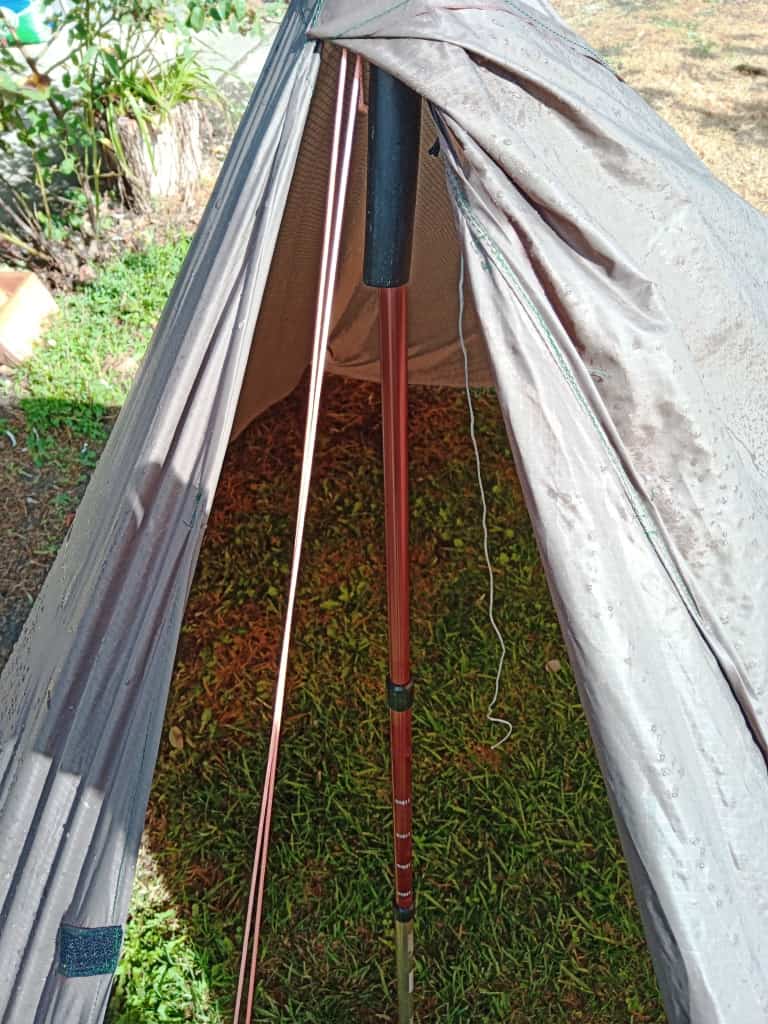
A couple of before and after photos might make this clear.
What the tent looked like in the morning on the Mitchell River recently after a night’s rain with a rigid pole.
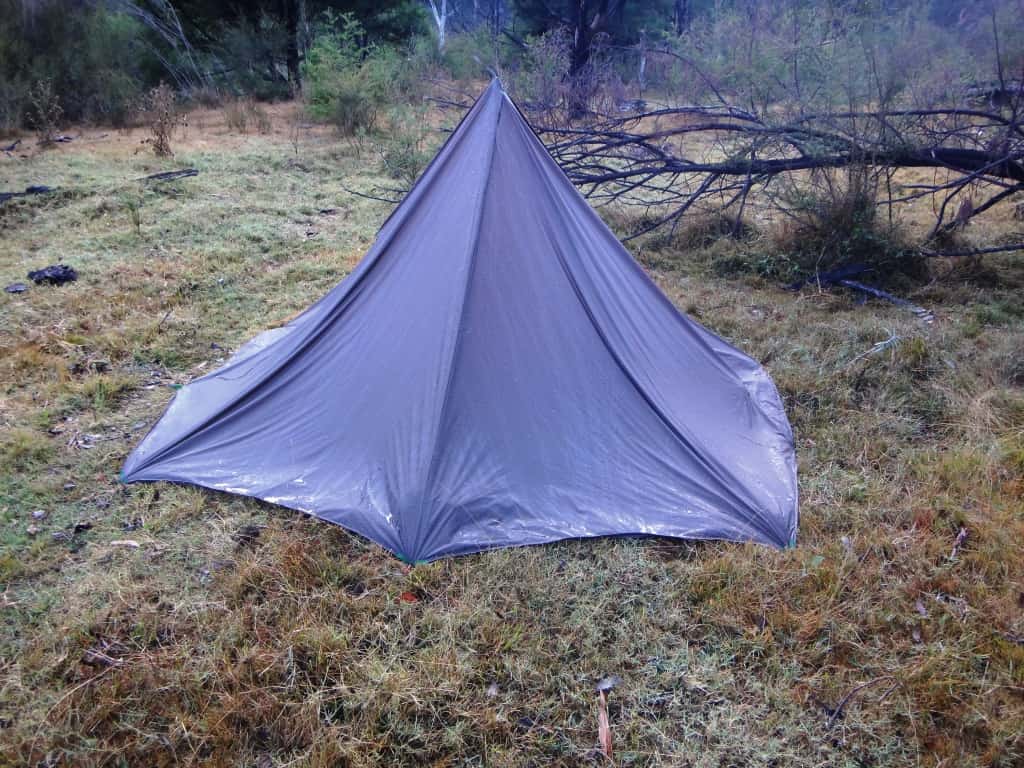
What it looked like this morning (with the sprung pole extension) after a night of heavy cold rain:
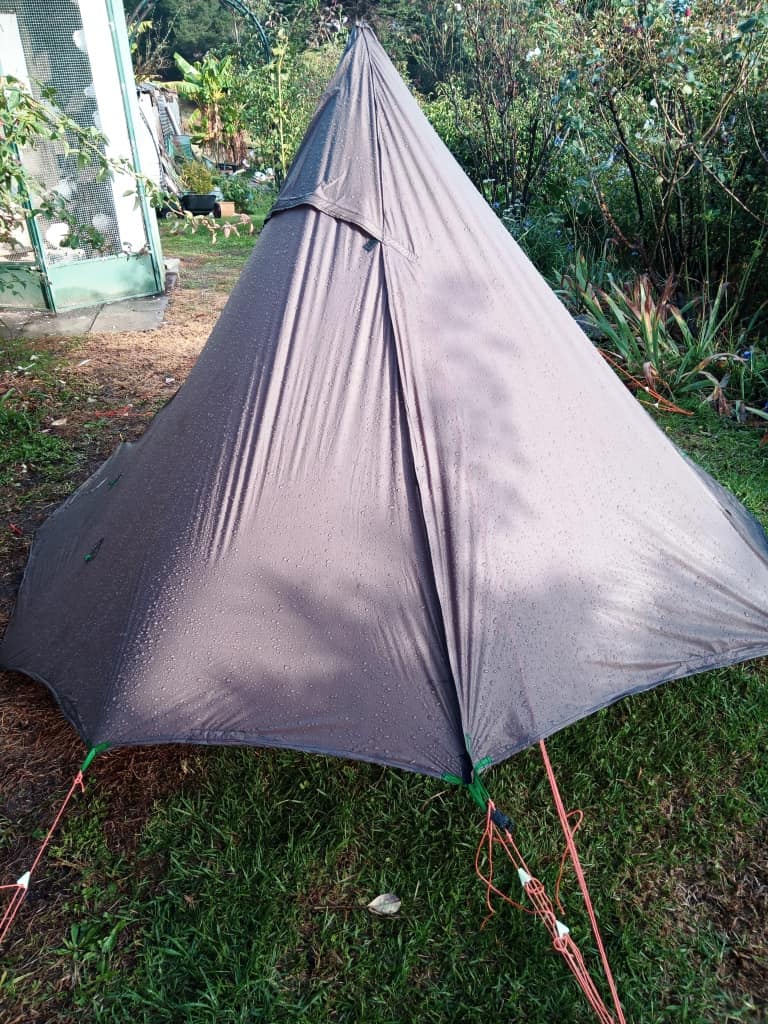
PS: I am nearly finished all the design work on this final long-promised (silnylon) version of this ‘Deer Hunter’s Tent‘ and will be posting about it soon – along with plans to download. (Floorless) it will weigh about 210 grams with ample space for two (plus dogs). (I made this (prototype) out of a cheap Chinese $1/metre (stretchy) silnylon. I will make the final version out of a low stretch material so that the difference (in droop) will be less dramatic but still, this idea will keep you safe and dry.)
I have been into the hardware store (Bunnings) this morning, bought a few cheap nick-knacks which will make several, and quickly constructed a couple (of ‘Skyhooks’ – there you go!) using 19mm (3/4″) poly irrigation pipe. Took only a couple of minutes. Cost (way) less than $10 each.
You can see the (exploded) and completed photos below. They weigh 20 and 22 grams for the shorter and longer versions. I think I prefer the travel and power of the C-756 (Century USA) 23/32 x 3 1/2″ x .41 (18.263 x 88.9 x1.04mm) Utility Comp Spring.
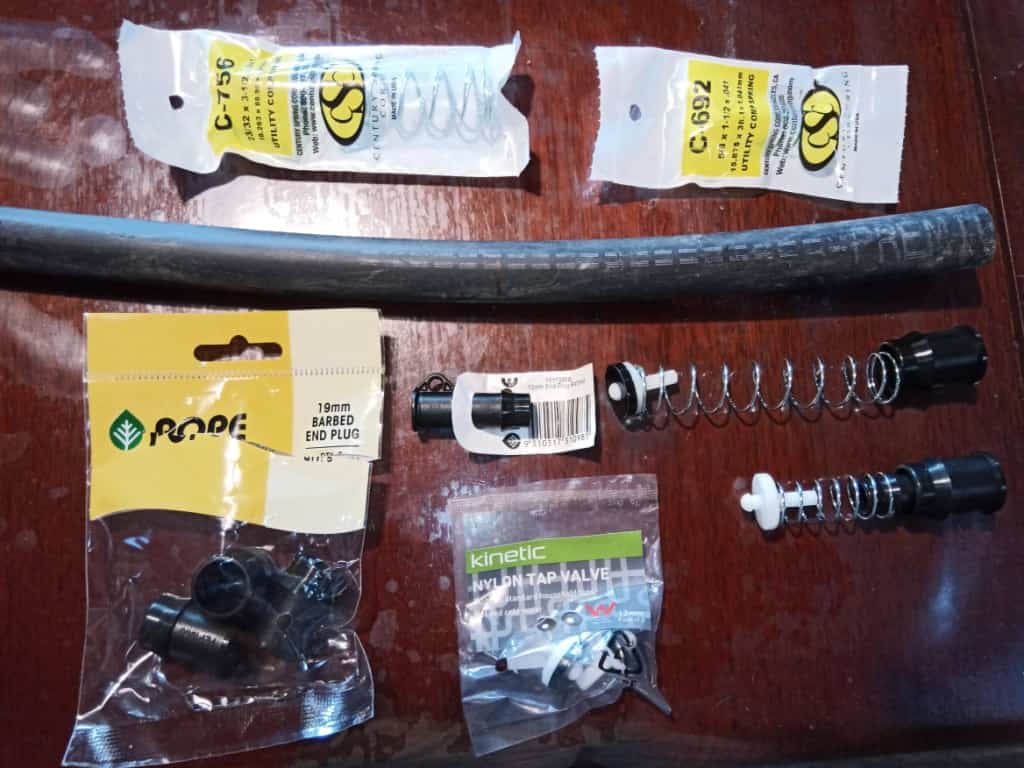
The bits and pieces are 19mm (3/4″) and 13mm (1/2″) end plugs, 1/2″ plastic tap washers (removed the rubber and cut off the projecting top to make them flat then spun them in a drill against an abrasive to reduce their diameter slightly), two different springs as shown which seemed suitable – and a length of 19mm (3/4″) poly irrigation tubing.
The pen represents the tent pole which will be placed inside the extension vertically. The plug end (right) will be up against the roof of the tent.
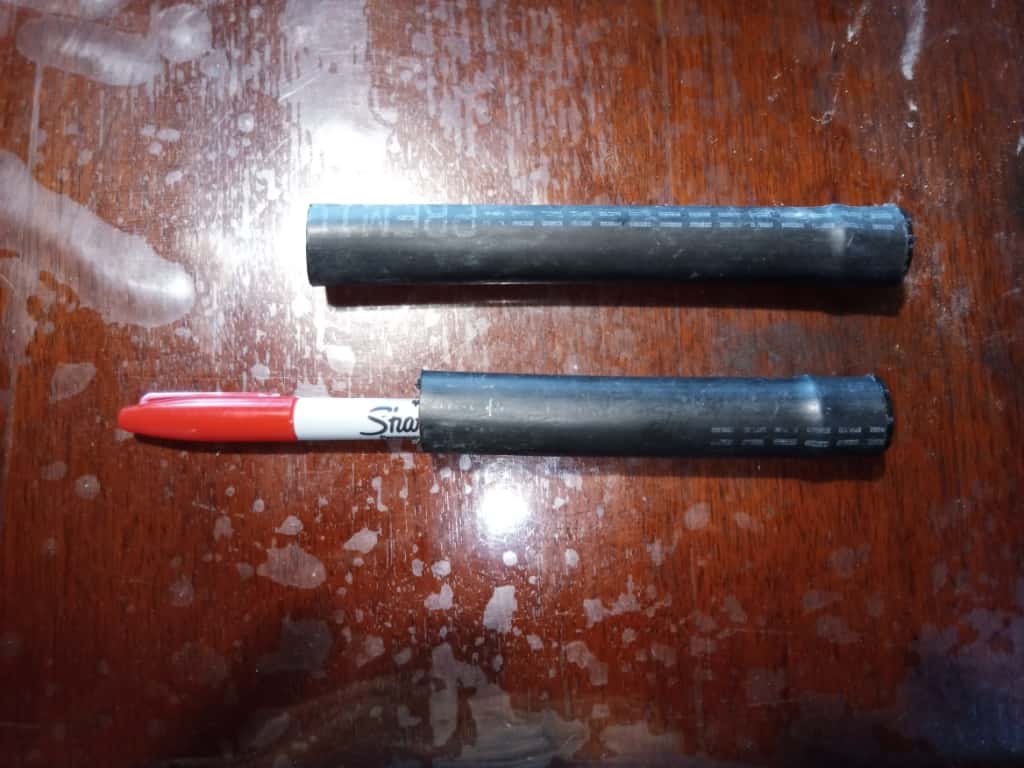
I needed to sand off the edges of the tap washers a little so they slide up and down in the pipe a little better. (Yes, that worked, as did flattening off the front of the valves).
Experiment may prove I needed stronger springs as well (bought from a bearing supplies store here).
You can maybe see I have placed a 1/2″ end plug inside the 3/4″ end plug in the lower (shorter) one to increase spring travel.
The idea is that instead of using elasticised tie-outs to tension the tent (down – heavier too) it will be tensioned (up) by a spring at the top of the (hiking pole) pole. This should prevent the tent from sagging overnight when the temperature wets and cools it and makes it sag.
I may need to run a bead of silicone around the inside of the end of the pipe to prevent the parts from falling out. The arrangement is a bit more solid if you use blue domestic pressure poly pipe instead as it has a much thicker wall size. The parts move a lot more freely in it too so it will/does work even better.
I have cut a ring of the same pipe, then snipped a section out of it, slipped it in the end and glued it in place. This keeps the spring and tap valve from falling out. Like this:
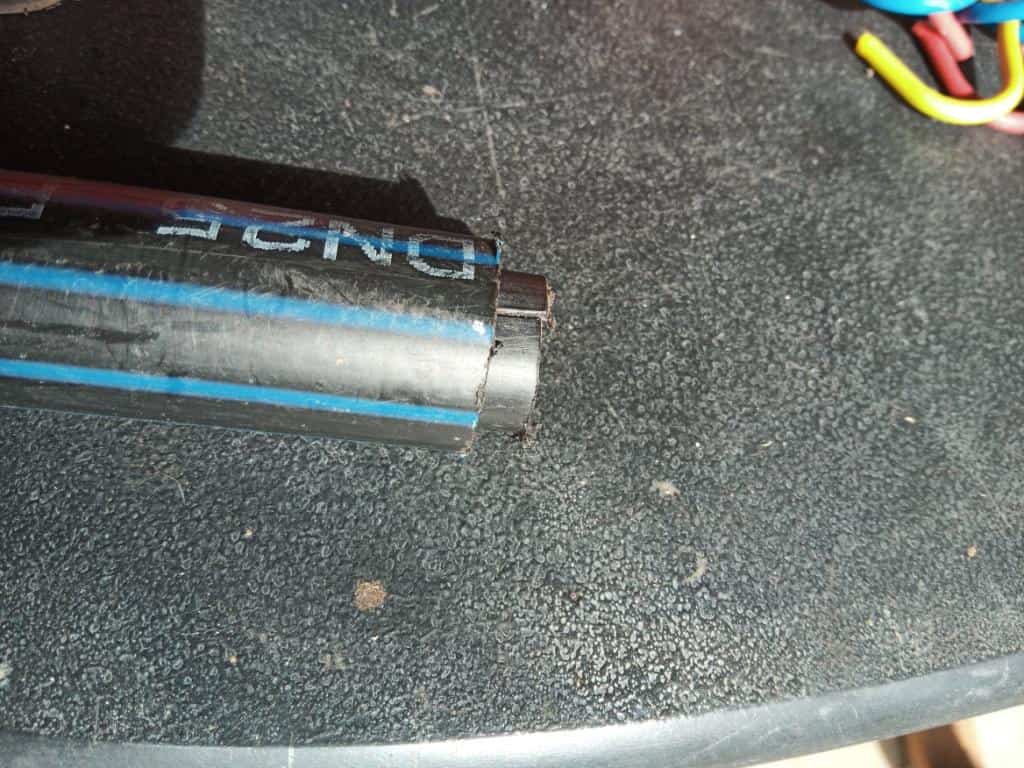
PS: Another way this might be done is using miniature shock absorbers for scale model racing cars – available on eBay for about $10 each.
I have a couple more mods to do on a tent I am building then I will try them out in the rain that’s coming this weekend.
PS: I have had a tent standing up with one for a couple of hours in the rain this morning – and they definitely seem to work.
PPS: See how (well) the side tie outs work too? These will keep the wet tent material from dampening yourself or your sleeping bag. 14″ and 36″ above ground seems to be a good height on this tent.
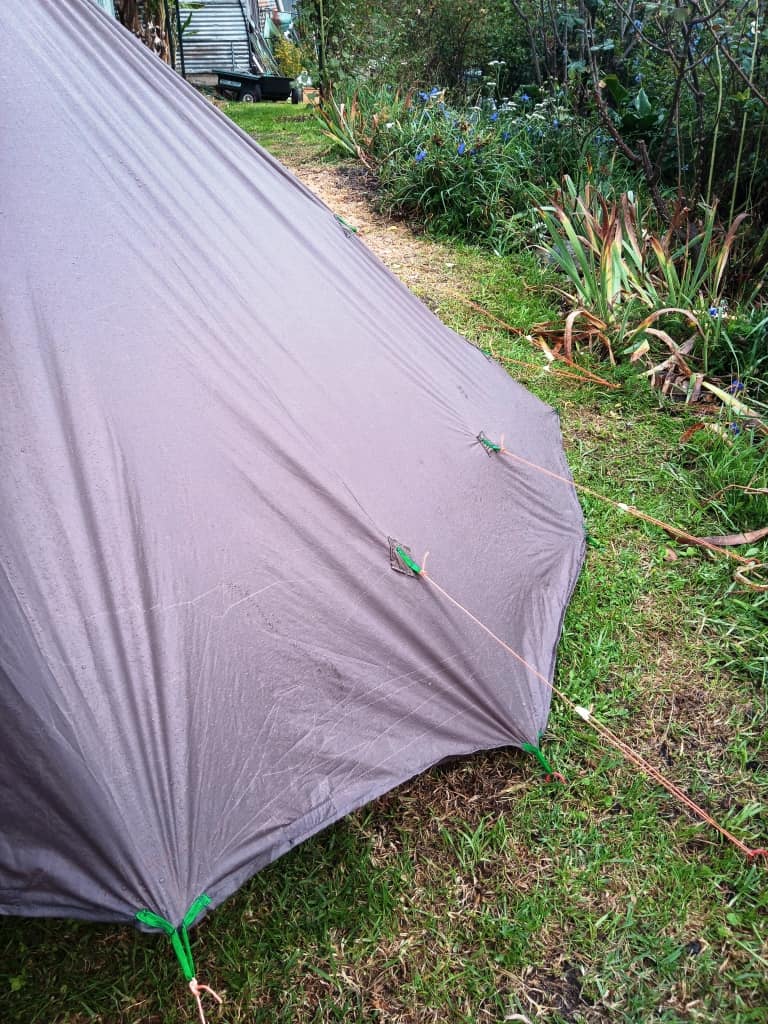
I will have another tie out going between the two ground pegs to stop the inside one from lifting. I call this a ‘tent anchor’. See the post Windy Old Weather and Ultralight Tent Poles
See Also:
